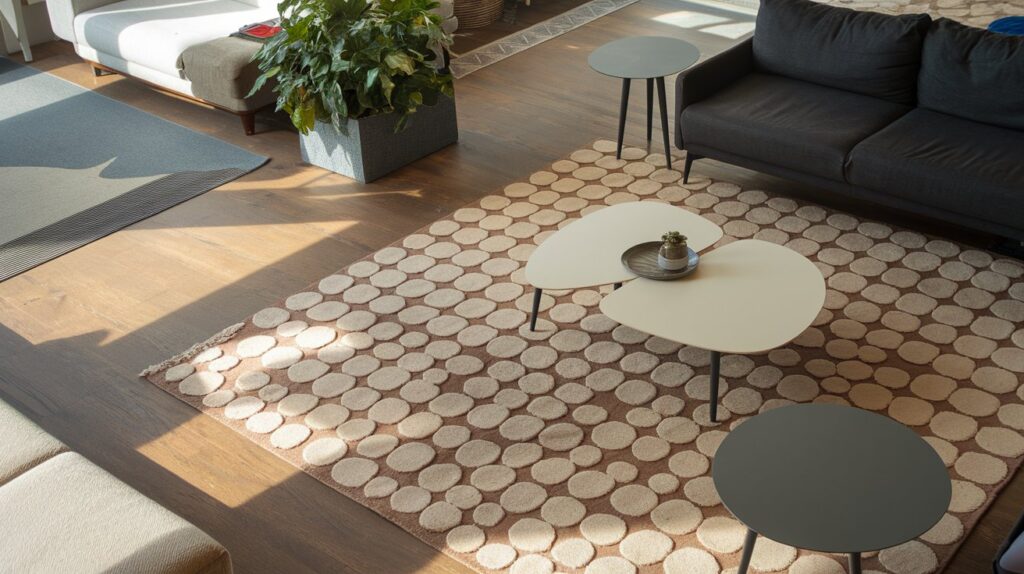Walkways through your home tell a story of daily life. They’re where people shuffle in from outside, where kids race to grab snacks, and where pets love to nap in patches of sunlight. But over time, these high‑traffic areas start showing wear-scuffs, dull patches, and even cracks-much sooner than the rest of your flooring. It can feel like no matter how much you clean or care for them, they always look tired.
Different flooring materials handle heavy use in different ways. For instance, limestone tiles offer durability and a beautiful natural look, but if they aren’t sealed or maintained correctly, dirt and grit can gradually dull their surface. Understanding what’s happening underfoot is the first step to keeping those busy areas in top condition.
The good news? With a few targeted habits and smart preventative measures, you can slow down that wear and keep your floors looking fresher for longer.
Know Where the Stress Points Are
Before you can protect your floors, take a walk around your home and identify which areas carry the heaviest load. Typical high‑traffic zones include:
- Entryways where dirt and debris are tracked in
- Hallways connecting frequently used rooms
- Kitchen work triangles between sink, stove, and fridge
- Stairs and landings that see constant footfall
Once you know where these spots are, you can focus your efforts where they matter most.
Use Mats and Runners Strategically
A simple mat or runner can be the first line of defence. At entrances, mats catch grit before it reaches your floors. In kitchens, runners protect from spills and dropped items. When choosing mats:
- Look for non‑slip backing to prevent accidents
- Pick materials that are easy to shake out or wash
- Ensure the style complements your decor so they blend in seamlessly
These additions cost far less than repairing or replacing worn sections of flooring.
Clean Regularly, But Smartly
It’s not just about how often you clean-it’s how you do it. Regular sweeping or vacuuming removes abrasive dirt particles that act like sandpaper underfoot. When mopping, use products that are safe for your specific flooring type and avoid oversaturating the surface, which can damage some materials over time.
For busy areas, increase the frequency of your cleaning routine, and don’t forget corners and edges where dust tends to collect.
Reseal and Refresh When Needed
Natural materials such as stone or timber often benefit from periodic sealing to protect them from moisture and staining. If your floors are starting to look dull even after cleaning, it might be time for a professional reseal or polish. This creates a protective layer that helps your floor withstand constant use.
Protect From Furniture and Heavy Items
Chairs dragged back from dining tables, bar stools, and movable islands can all leave marks. Add felt pads or gliders to furniture legs and replace them when they wear out. For moveable storage units or carts, consider rubber wheels that are gentler on hard surfaces.
Rotate Rugs and Rearrange Occasionally
If you already use rugs, rotate them every few months so one spot doesn’t bear all the traffic. Rearranging furniture can also change walking patterns slightly, spreading wear more evenly across your floors.
Watch for Early Signs of Damage
Small chips, scratches, or loose grout can quickly grow into bigger issues if ignored. Inspect high‑traffic areas regularly and address minor repairs straight away. A little attention now can save significant costs later.
A Home That Stays Beautiful Under Pressure
High‑traffic areas don’t have to look tired or worn. By identifying stress points, adding protective layers, maintaining regular cleaning, and staying on top of repairs, you can extend the life of your flooring and keep your home looking fresh. With these small but impactful changes, those busy walkways will continue to tell your home’s story-without showing every step along the way.

